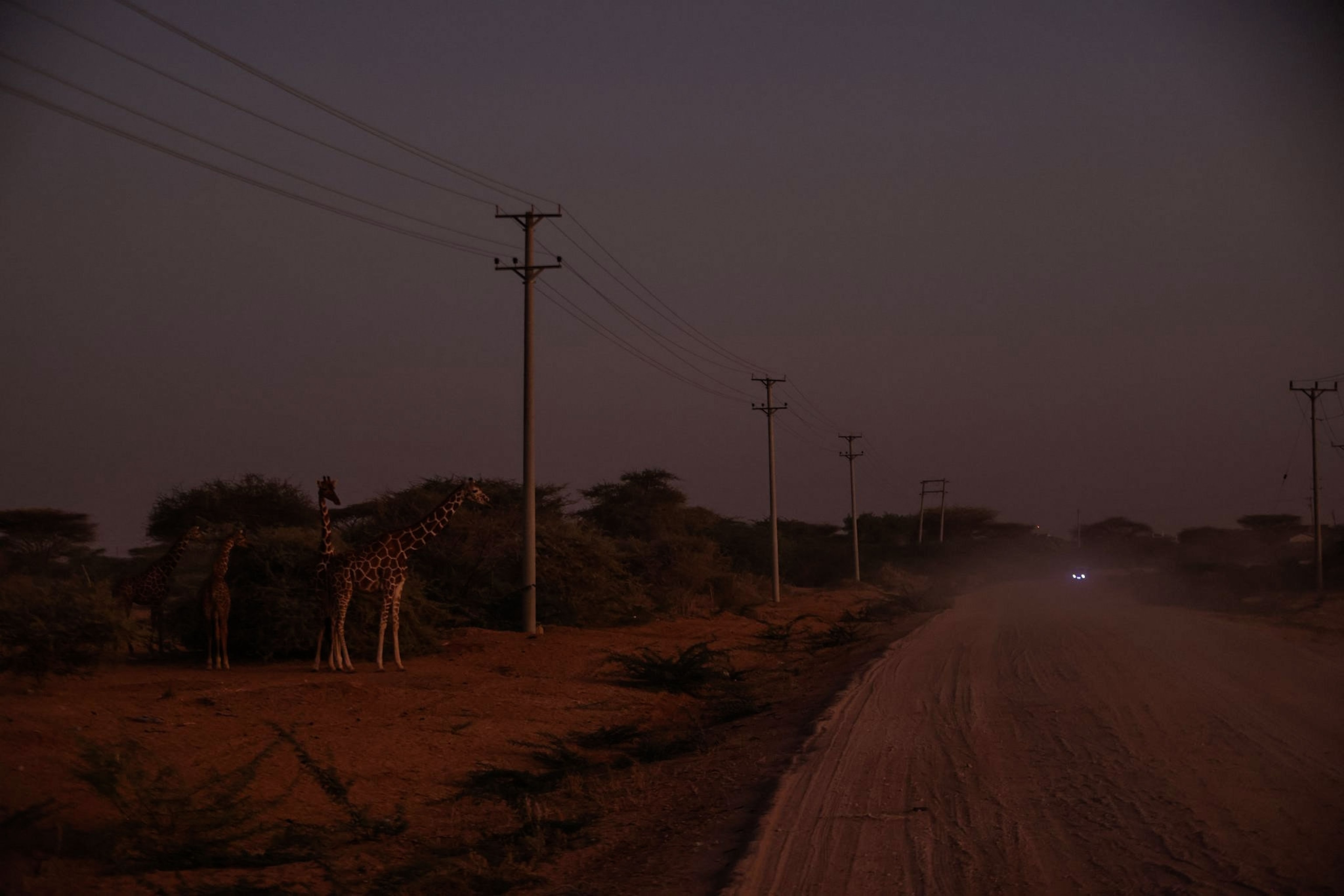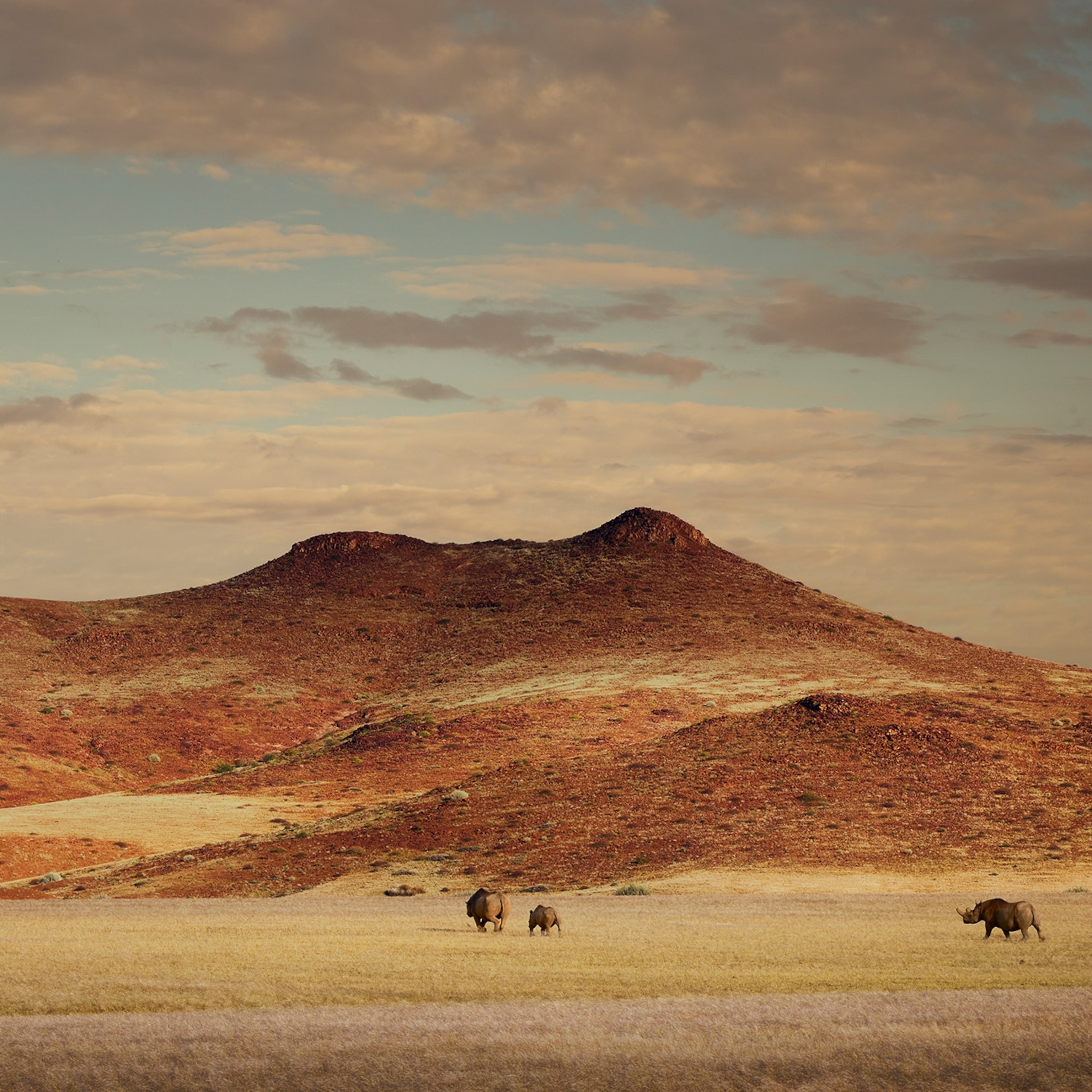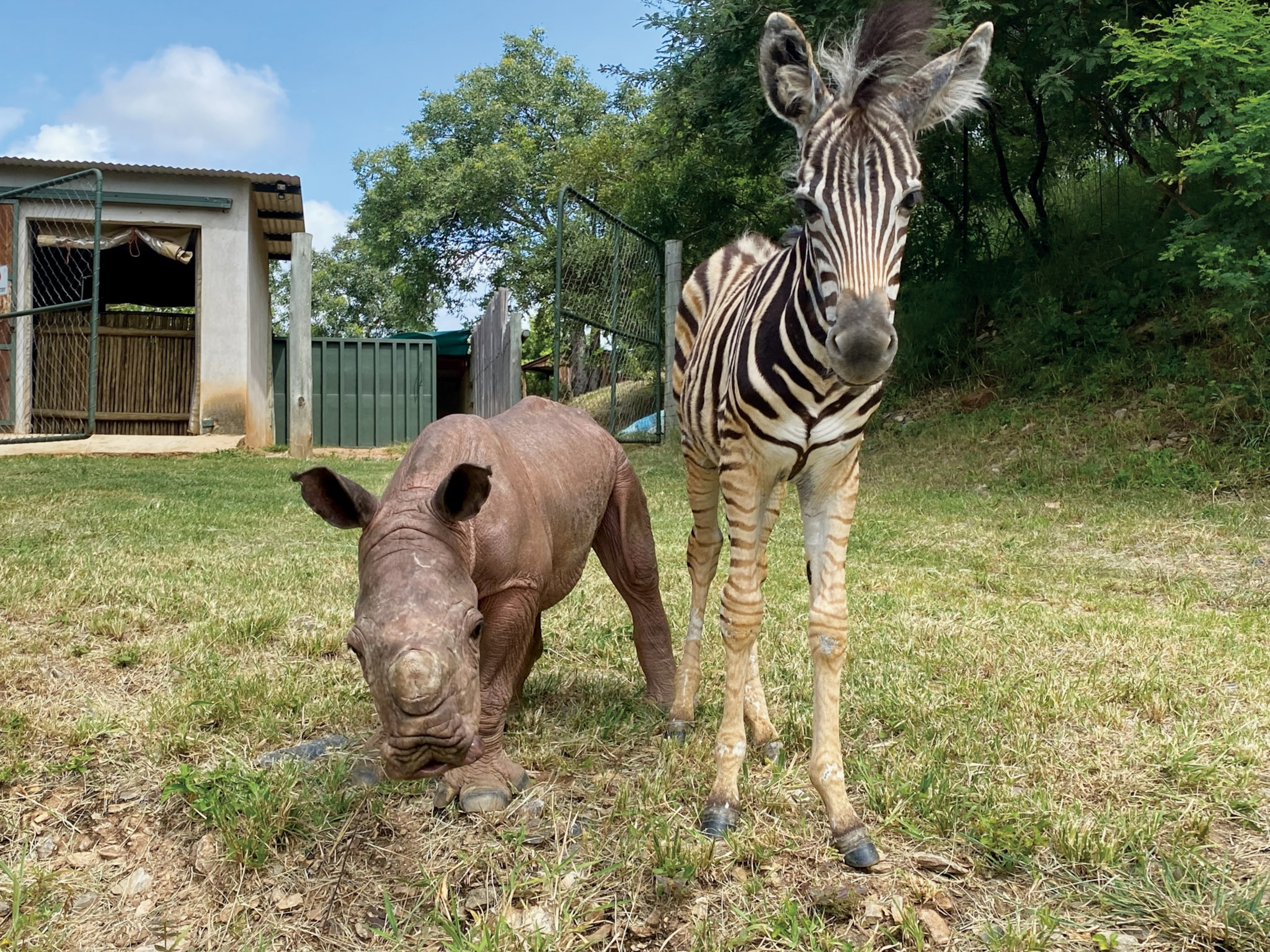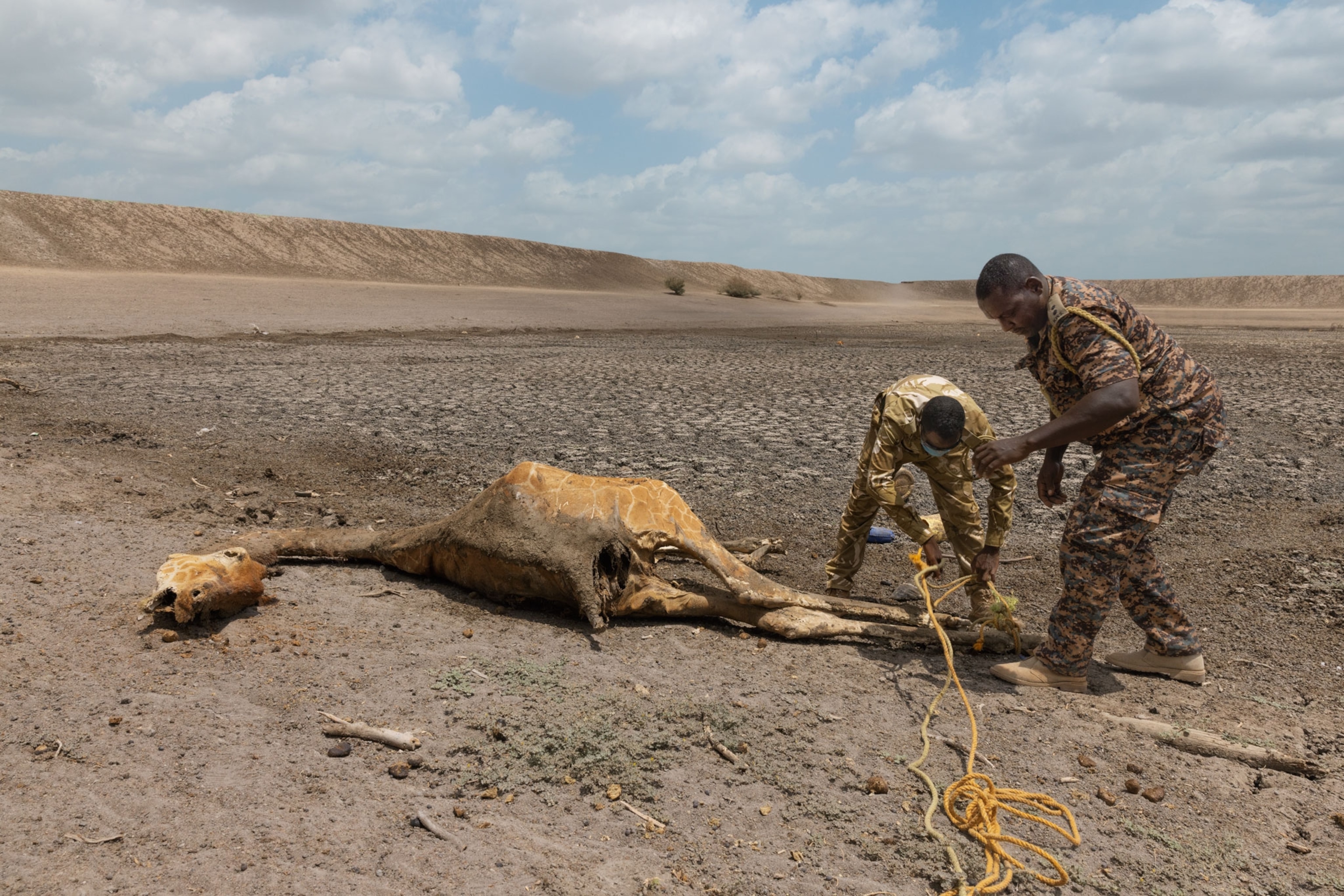
As drought worsens, can Kenyan communities coexist with native wildlife?
As prolonged drought plagues the Horn of Africa, some people perceive animals as a threat to scarce resources, while other communities rally to protect the creatures.
Wajir County, Kenya — The men sitting inside the open-backed safari truck were silent and tense as they pulled up alongside their target. A young male giraffe stood under the shade of a tall tree, seeking relief from the unusually brutal March sun. As he heard the tires roll over dry thorn bushes, he craned his long neck and perked up his ears.
The man in the passenger seat aimed his gun and pulled the trigger, hitting the giraffe squarely in the flank. The group let out a hushed cheer as the animal flinched.
A man in the backseat set the timer on his watch. “Seven minutes until he falls,” he whispered.
The giraffe wobbled drunkenly and then took off, loping into an open clearing. A six-foot log attached to his back foot by electrical wire dragged behind him. The men—a team of veterinarians from the government and a conservation nonprofit—were there to sedate him and remove the snare, set by poachers. If they didn’t, human or animal predators likely would kill the giraffe that night.
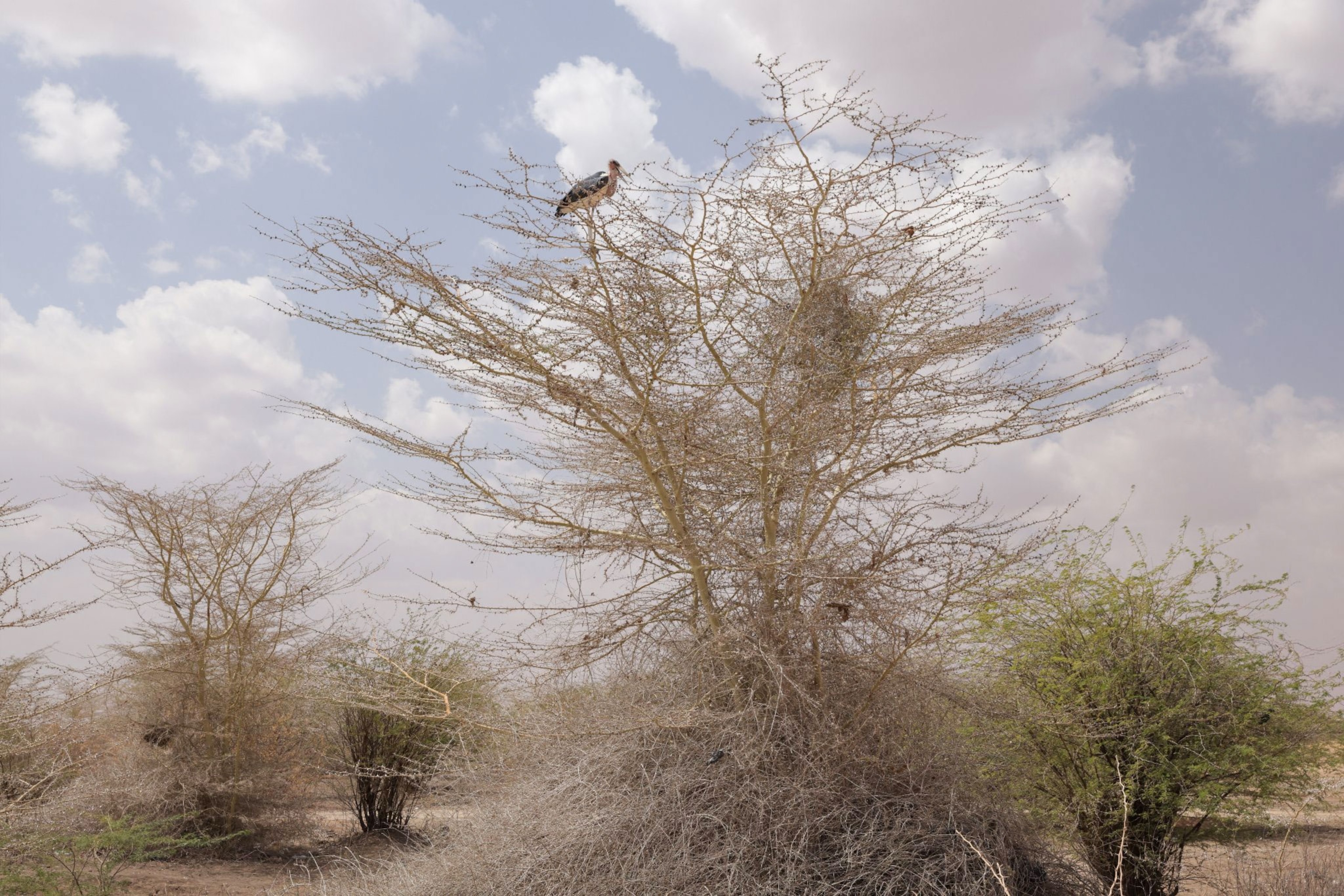
The team sprinted after the giraffe and lassoed his legs, and he crashed down on his side. One veterinarian crouched by the giraffe’s head and held it down, covering the animal’s large brown eyes and long feathery eyelashes with a towel. The other vet used bolt cutters to snap the electrical wire. As they worked, men from a nearby village encircled them, pouring cool water on the giraffe’s body to protect him from the heat.
It was over in minutes. The veterinarians administered the antidote to the tranquilizer and shouted for the crowd to clear. They pushed the giraffe’s head up and helped him stand. He looked around, as if surprised to see so many people milling around him. Then he lumbered over to a nearby tree, raised his head, and began to eat.
During the past 35 years, the number of reticulated giraffes, which today live almost exclusively in northern Kenya, has dropped from 36,000 to fewer than 16,000—a 56 percent decline. The species was classified as endangered by the International Union for Conservation of Nature in 2018. The giraffes have died in huge numbers, largely because of decades of tribal conflicts over land and resources, violence by the Somalia-based terrorist group al-Shabaab, and, perhaps most urgent, from climate change, which has accelerated habitat loss and increased poaching in the region.
The Horn of Africa has endured three consecutive seasons of scant rainfall that have been linked to climate change. One more poor rainy season will make this the longest drought the region has experienced in four decades. Some 20 million people are in need of urgent food aid as crops fail and livestock die. Climate experts say that even an average rainy season wouldn’t be enough to undo the damage of the past few years.
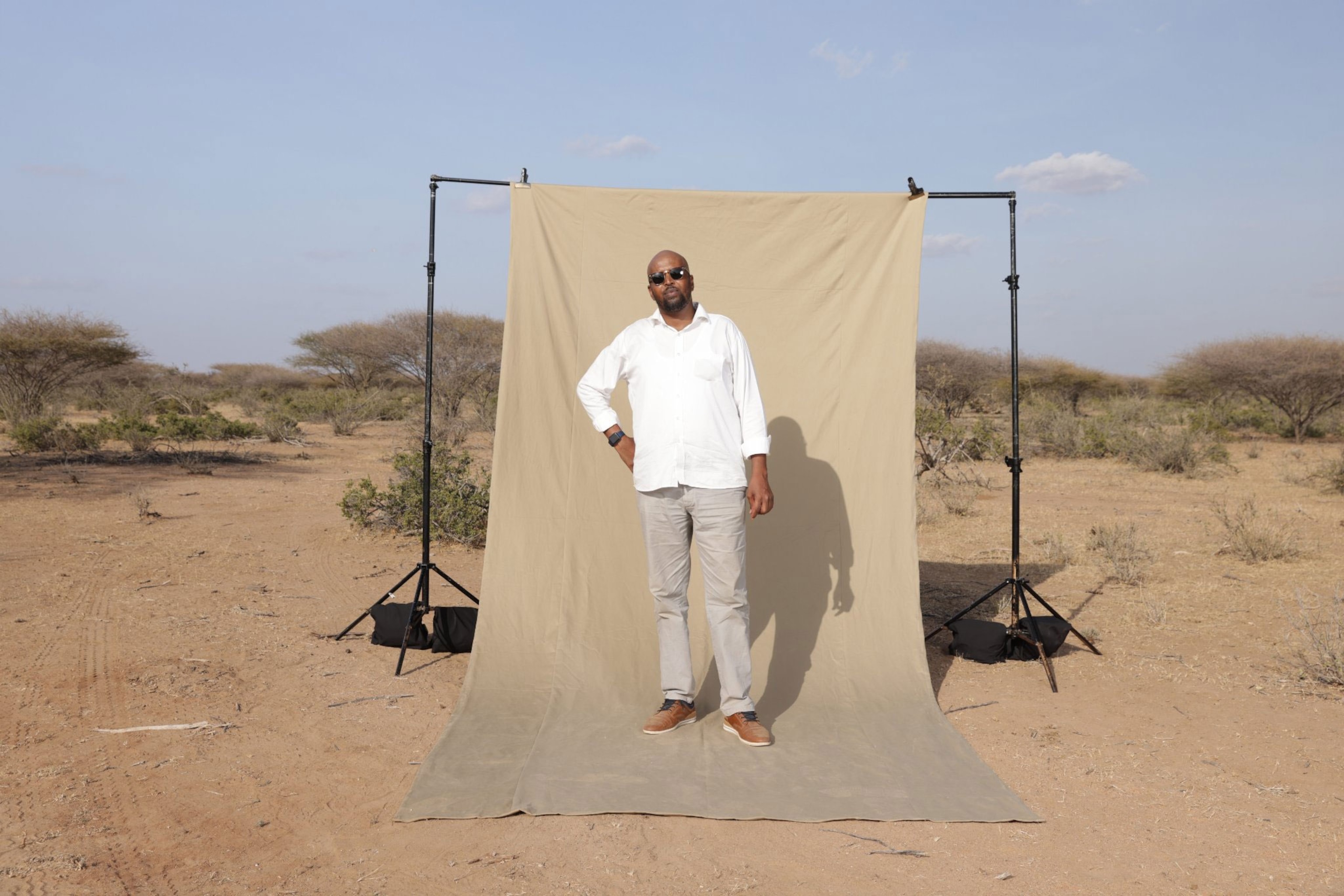
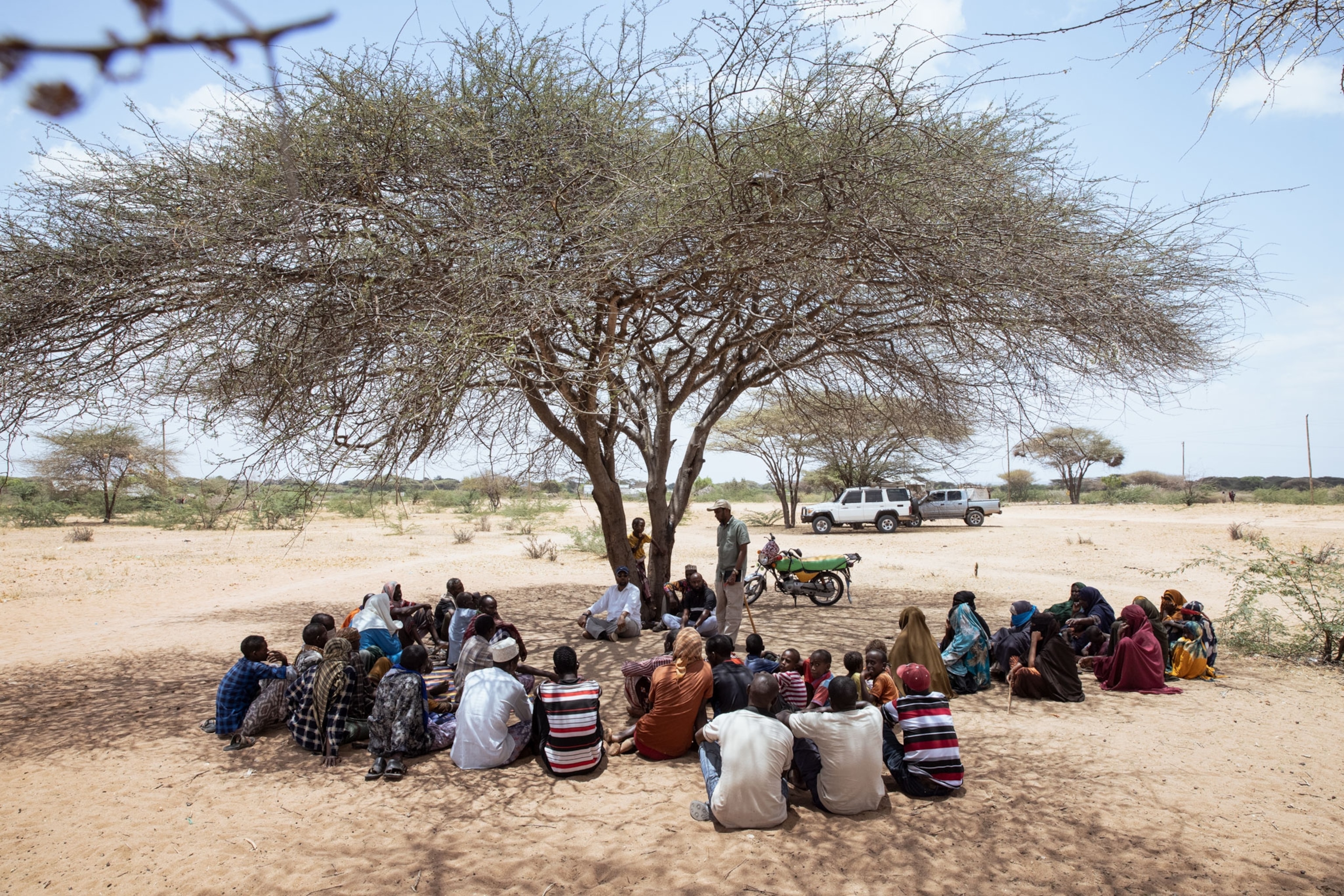
“Drought is a slow-onset disaster that creeps in slowly but has serious impact,” says Jully Ouma, a climate scientist at Igad Climate Prediction and Applications Center in Nairobi. “It takes time to recover.”
Today, the northeastern counties of Garissa, Wajir, and Mandera are covered in red dust. The bushes and trees are dead. And the air smells like rotting flesh from the carcasses of goats, camels, and donkeys that have collapsed along roadsides from starvation and thirst.
Drought doesn’t discriminate between livestock and wildlife. But in many ways, wild animals are far more vulnerable to its effects than their domesticated cousins. “For the livestock, humans can move with them and direct them to where they think pasture and water are, but the wildlife have to survive on their own,” Ouma says.
Climate change is hitting the region’s wild animals on several fronts. It’s exacerbating human-wildlife conflict and habitat destruction, as traditionally nomadic pastoralists lose their livestock and settle in what was once wildlife habitat. It’s ramping up poaching, as locals and refugees kill animals to eliminate competition for scarce resources, feed themselves and their families, or sell their meat for a small income. And it’s also affecting wildlife directly, as animals simply drop dead from the extreme, unyielding heat and lack of food and water.
Local wildlife activists are creating community-based conservancies across northeast Kenya to protect its unique species, including the reticulated giraffe, the critically endangered hirola antelope, the endangered Grevy’s zebra, and the blue-necked Somali ostrich. But without large-scale interventions to stem the destruction of climate change, future generations may never have the opportunity to live among these rare animals.
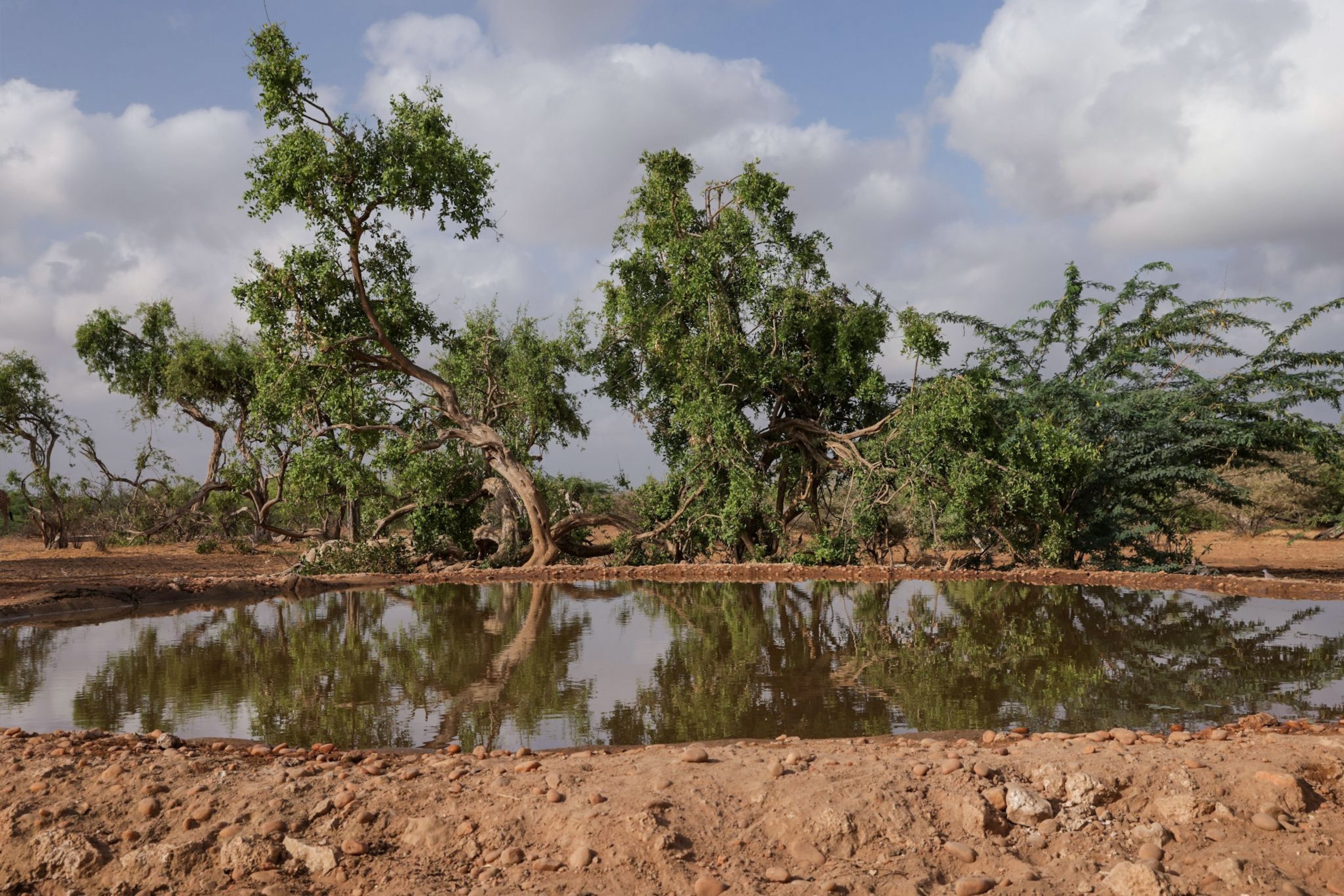
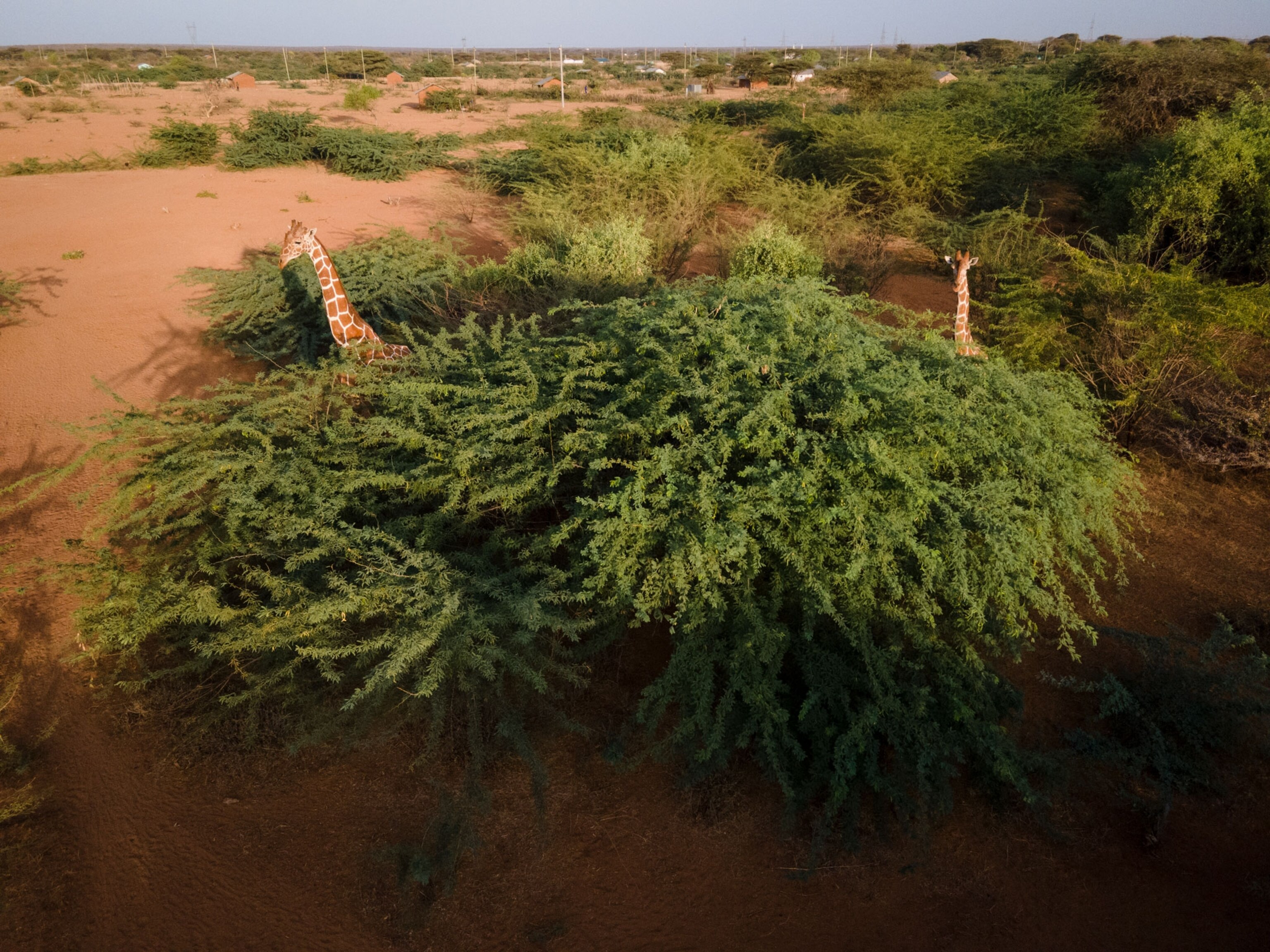
The birth of NECA
In 2011, 48-year-old Sharmake Yussuf was driving down the M1 highway from London to Sheffield when he received a call from his stepmother in Wajir County, Kenya.
Yussuf, a Kenyan-Somali who had been working as a systems engineer in the United Kingdom for 20 years, had bought some camels, highly valued in Somali culture, several months earlier. Yussuf’s stepmother informed him that a lion had killed and eaten one of his prized animals. Bad luck, Yussuf thought to himself before putting the incident out of his mind.
On his drive back to London the next day, Yussuf’s stepmother called back. She had poisoned the carcass of the camel, she told him proudly, and the lion had died an agonizing death when it returned to finish its meal. Yussuf was furious. To him, the lion was far more precious than the camel. But revenge killings have always been a part of Somali pastoralist culture—a way of ensuring that predators such as lions, hyenas, and cheetahs stick to eating wild animals and don’t develop a taste for livestock.
“It dawned on me how my community looks at wildlife, and I made a decision there and then to try to do something within my community to change how they view conservation,” Yussuf says. He returned to Kenya a few months later and realized just how few conservancies and reserves there were in the northeast. Even the veterinarians who came to rescue the young male giraffe were brought in from Nairobi, over 200 miles away, and Meru, about 140 miles away.
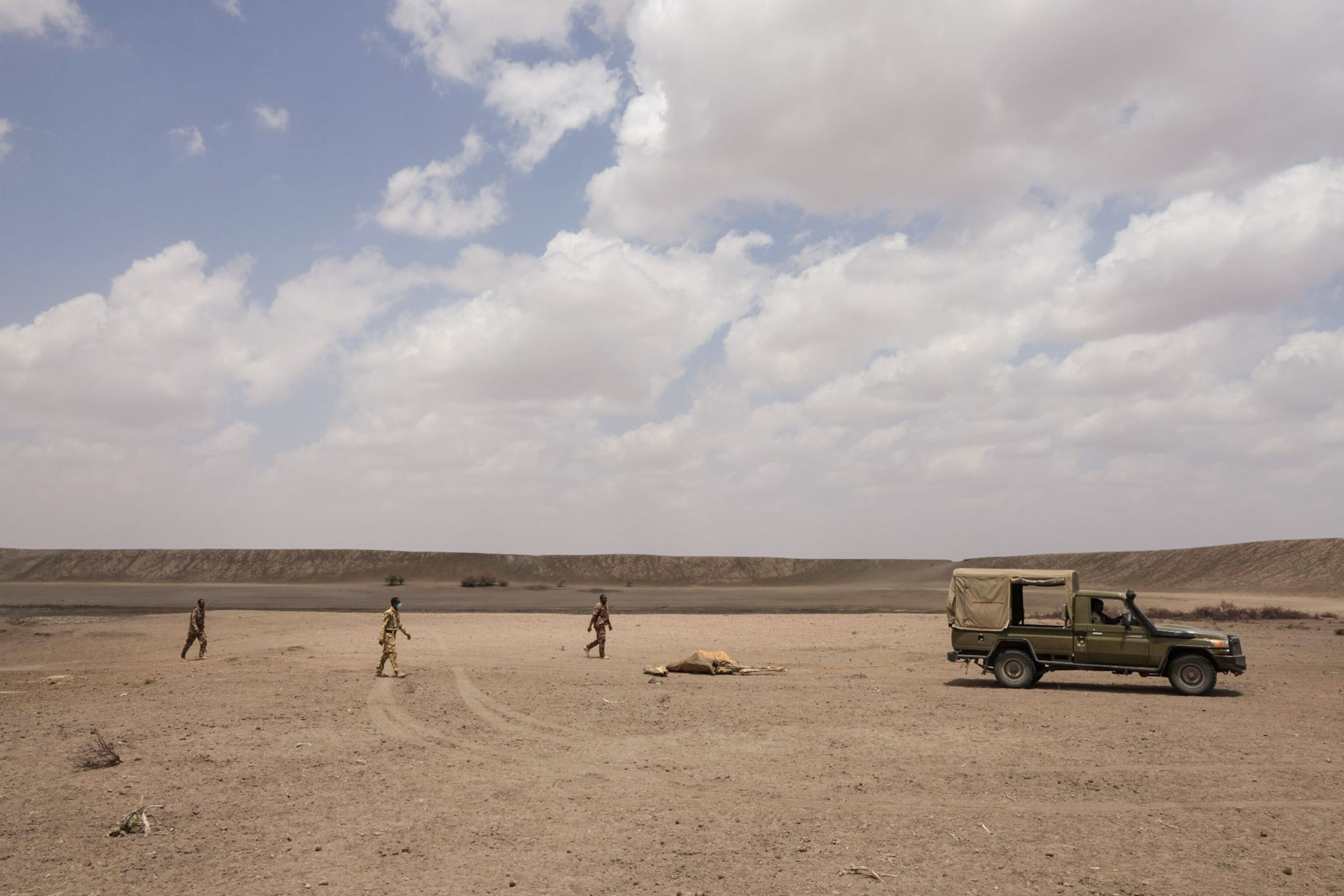
Northeast Kenya, long viewed by Nairobi as a rogue and troublesome region, has seen relatively little government investment in infrastructure and development since its independence from British colonial rule in 1963. This has made communities there especially vulnerable to the effects of drought and increased competition for scarce resources, damaging the once-peaceful relationship between humans and wildlife.
Regional instability also meant that the northeast was widely believed to have minimal wildlife. But in 2021, during Kenya’s first-ever national wildlife census, air pilots surveying Garissa, Wajir, and Mandera counties discovered 6,000 reticulated giraffes, more than a third of the world’s remaining population, 302 Grevy’s zebras, and 141 lions.
Yussuf was determined to find a way to help people thrive alongside this wildlife, rather than see them as a threat. He turned to community-based conservation, considered one of the soundest forms of protection. The land that professional rangers are responsible for patrolling is far too vast to have eyes everywhere. So, when the community unites around wildlife protection, it can be particularly effective. Communities set aside land for wild animals, and in return, specific grazing areas are designated for livestock. The presence of abundant wildlife also promises income from foreign tourists.
Persuading communities to share their land with wildlife, however, isn’t easy. Pastoralists often are afraid that conservation will mean higher numbers of predators that threaten their livestock, and that fencing off certain areas will prevent them from grazing their cows, goats, and camels there. Access to grazing lands historically has been a heated point of debate between pastoralists and conservationists.
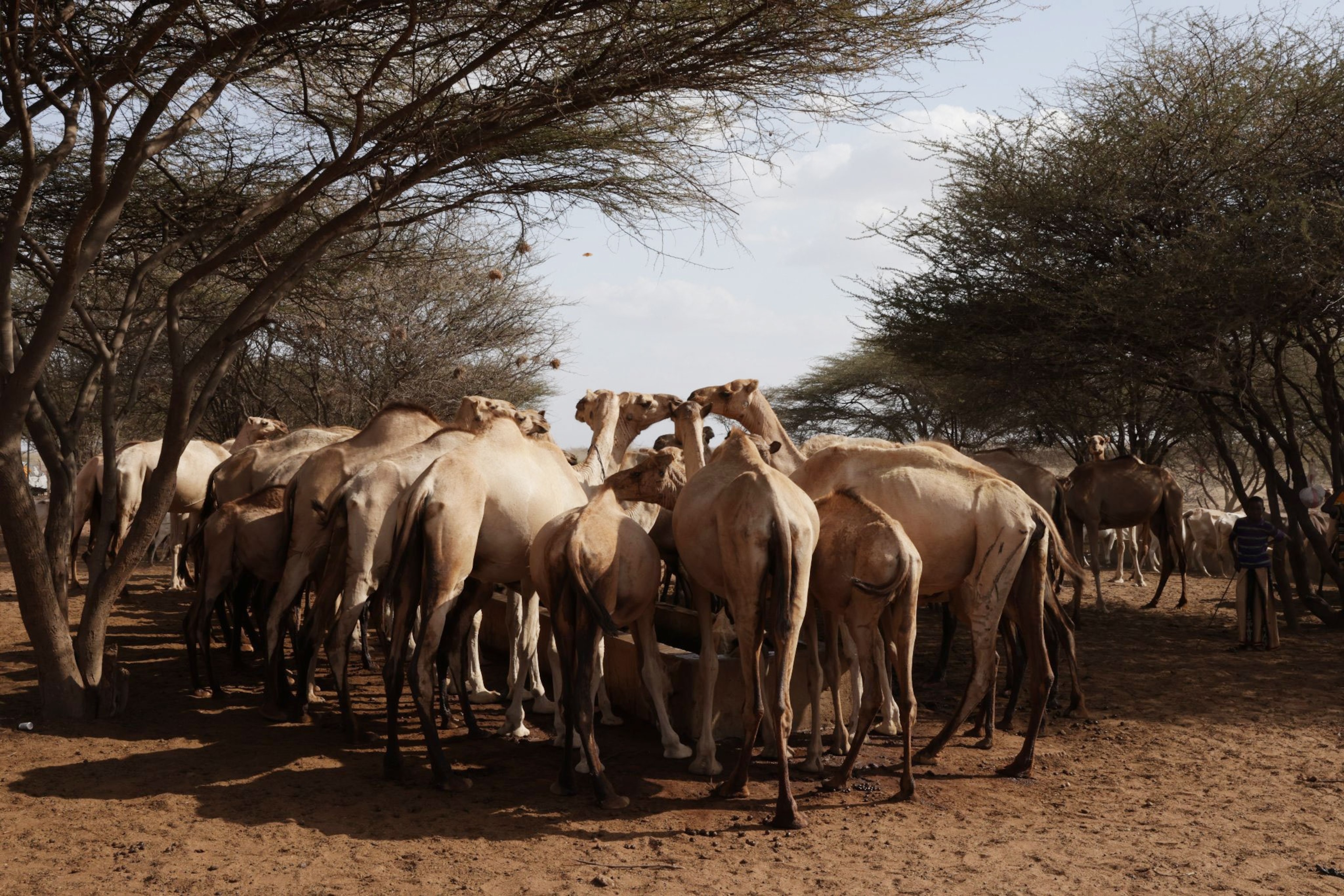
Yussuf, broad-shouldered and crisply dressed even in the most withering heat, has a bright smile and inexhaustible energy for advocating for wildlife protection in the Somali community. For seven years, he engaged community elders and imams, local government officials, and residents about their responsibility to care for these animals. There would have been no point moving forward without their blessing.
“I went one village at a time, one tribe at a time, one subclan at a time,” he says.
His persistence paid off, and in 2018 he formed Sabuli Conservancy, 510,000 acres now protected by 30 conservancy rangers. Last year, Yussuf founded the North-Eastern Conservancies Association (NECA), an umbrella organization that unites Sabuli and seven other conservancies spanning nearly two million acres. Another 18 conservancies have been proposed, which would bring the total area of protected land to five million acres.
Challenges to animals, and to a way of life
Just outside the town of Garissa, homes are popping up on either side of the main road. Kenya’s population has grown nearly sevenfold since the 1960s, and as droughts hit with increasing frequency and intensity, nomadic pastoralists are giving up their traditional way of life and settling in villages.
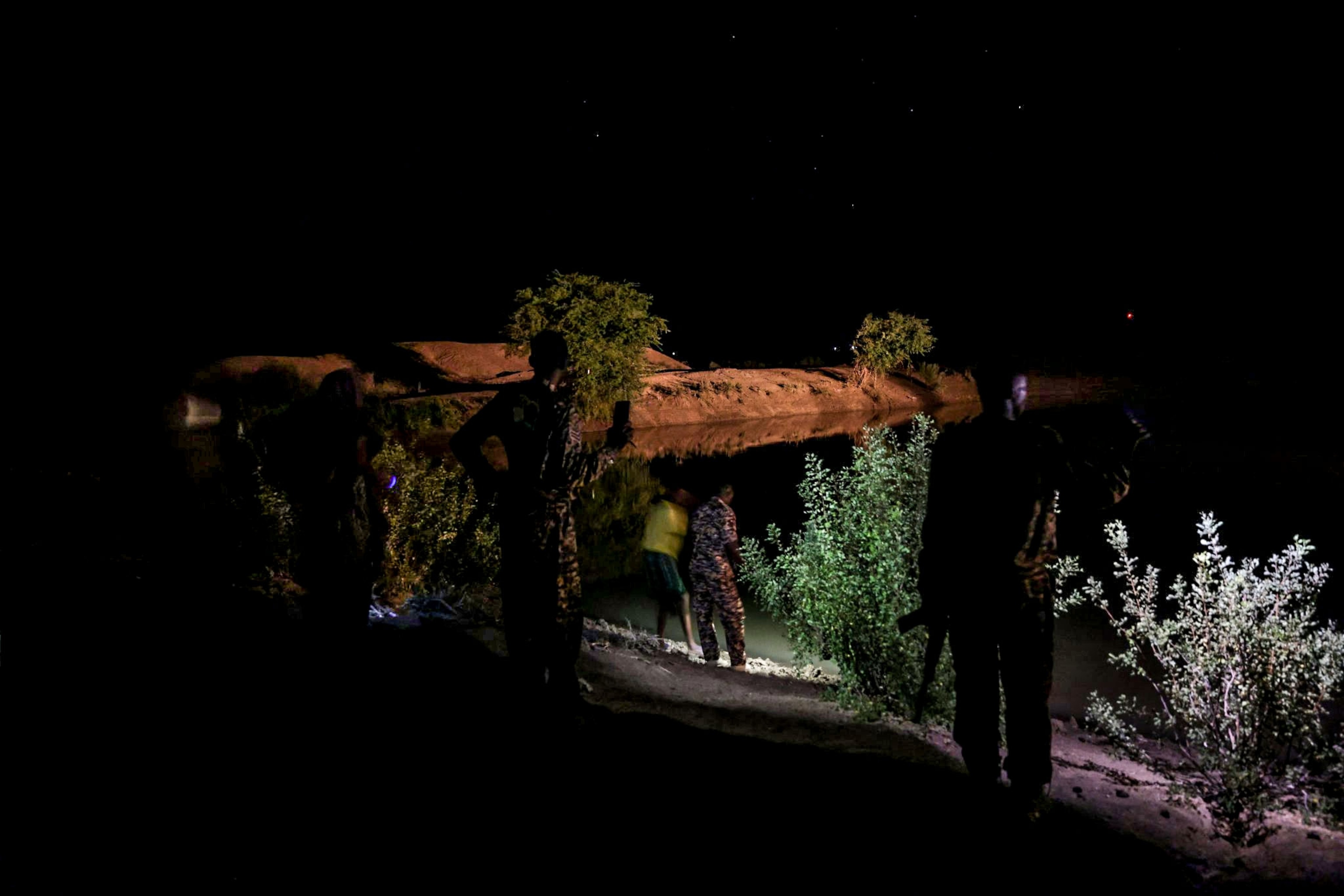
Every evening, as the sun sets over the Tana River, giraffes travel from their grazing land in the east across the main road to drink. What was once a traditional migration corridor is now blocked by high concrete walls, and the giraffes walk from plot to plot searching for an opening. When they find one, they rush across the road in groups, wary of speeding cars and motorcycles.
“During the day, they give a chance to humans to use the river, and they move away,” says National Geographic Explorer Abdullahi Ali, a Garissa-born conservation scientist specializing in reticulated giraffes and hirolas. “In the evening, they have to come back.” (Ali won National Geographic/Buffett Awards for Leadership in Conservation in 2021.)
Ali worries that one day this entire area will be fenced in, and giraffes will be pushed out of their ancestral home altogether.
“That would be a huge catastrophe. Can you imagine a world without giraffes?” he asks.
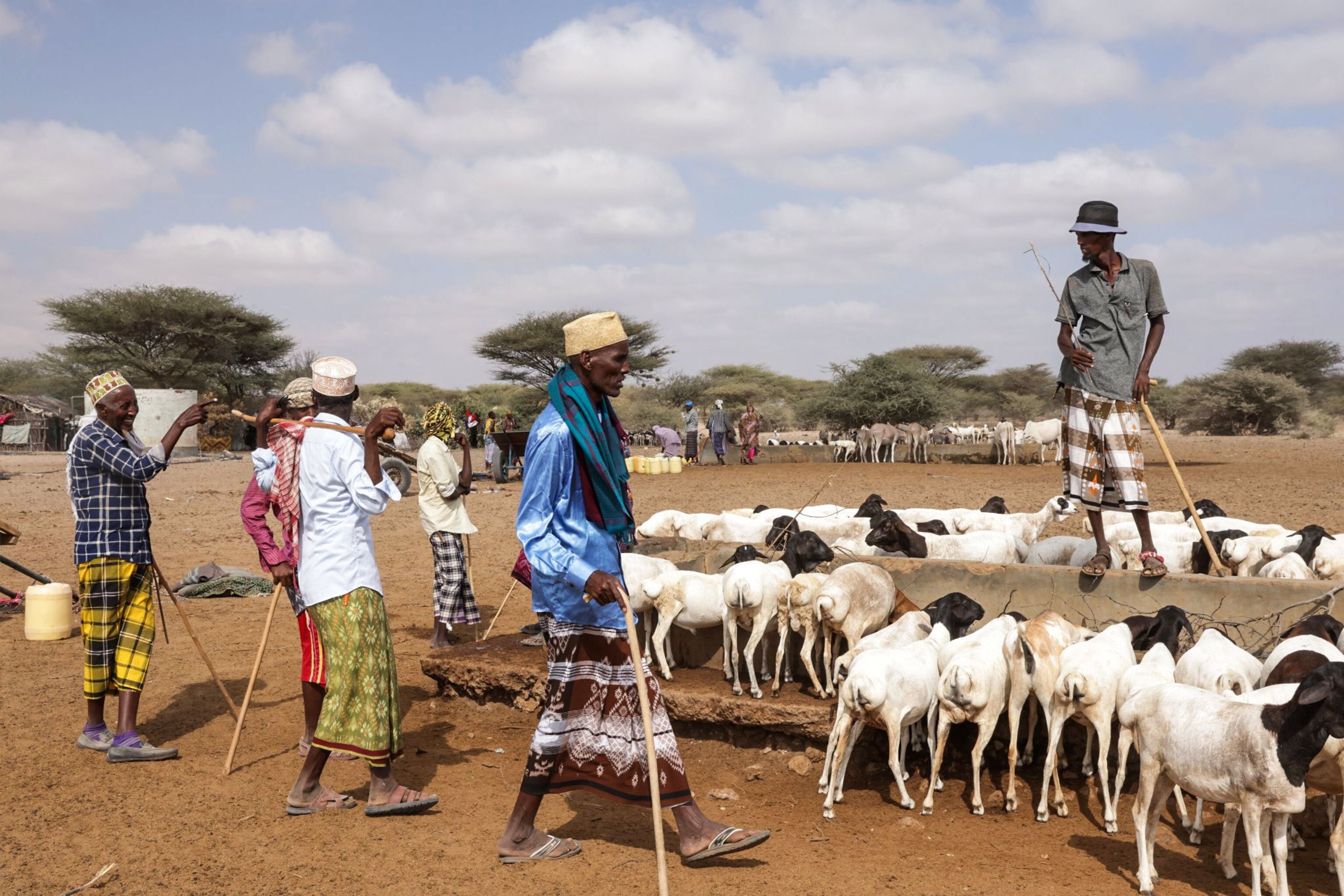
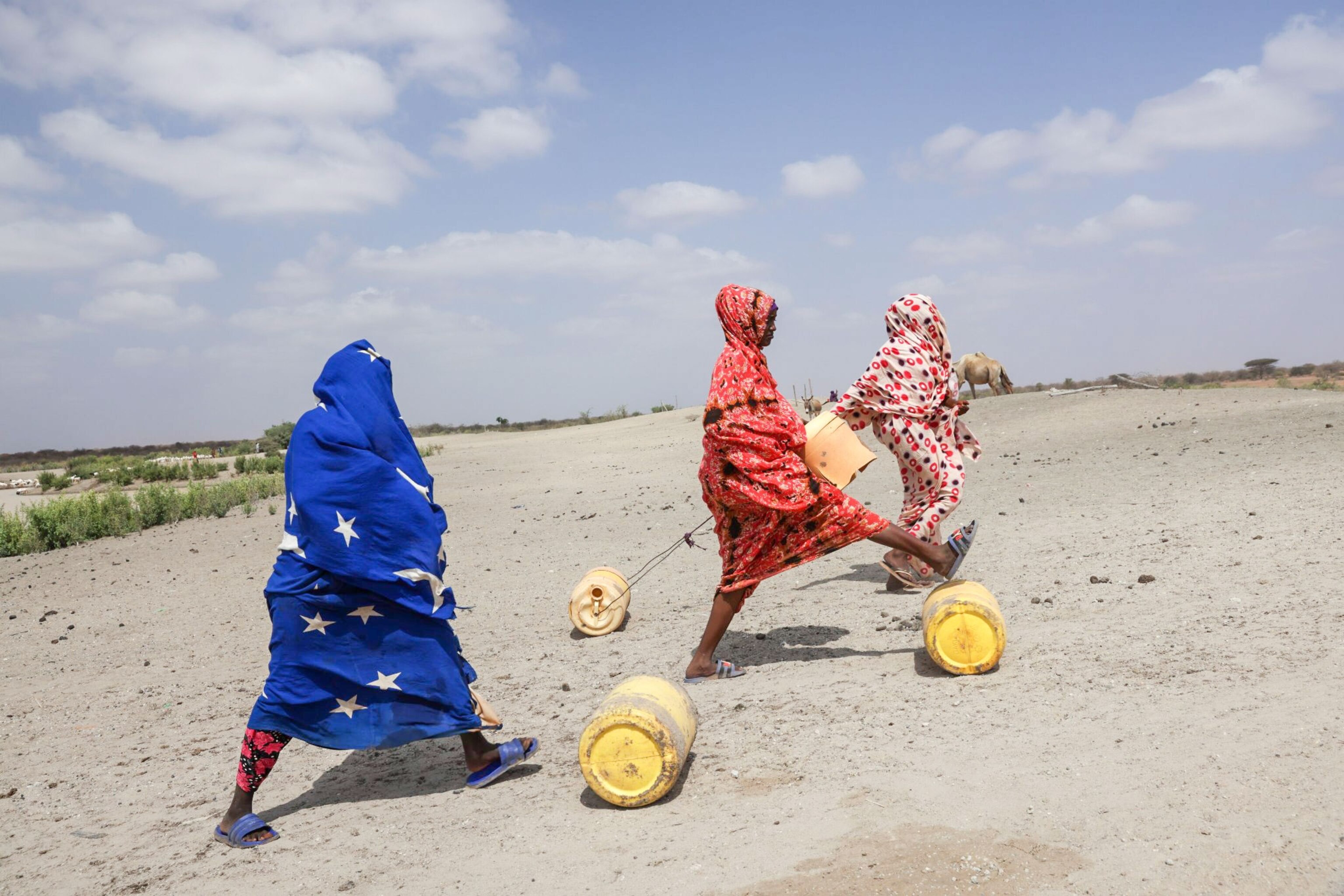
The Tana River provides irrigation for a few farms near Garissa that grow beans, mangos, and other crops that are lifelines for local people. As the drought has intensified, the giraffes have started venturing into these farms at night, braving the possibility of human interaction to find water. They trample the crops, which has prompted the farmers to begin patrolling their fields carrying machetes and broken bottles. When they encounter an unsuspecting, thirsty giraffe, they slash its legs.
“Either you take care of the giraffes, or we will,” says 45-year-old Habiba Bilow, warning the conservationists. She is considering giving up her farm because of the destruction caused by giraffes.
The Kenya Wildlife Service compensates pastoralists when they lose their animals to predators, but some people wait years to see the money. In the meantime, they find other ways of seeking retribution. Last year in Sabuli, a lion killed two lactating cows, prompting angry local residents to poison one of the carcasses. When the lion returned to finish its meal the next day, it went blind, and the town stoned it to death.
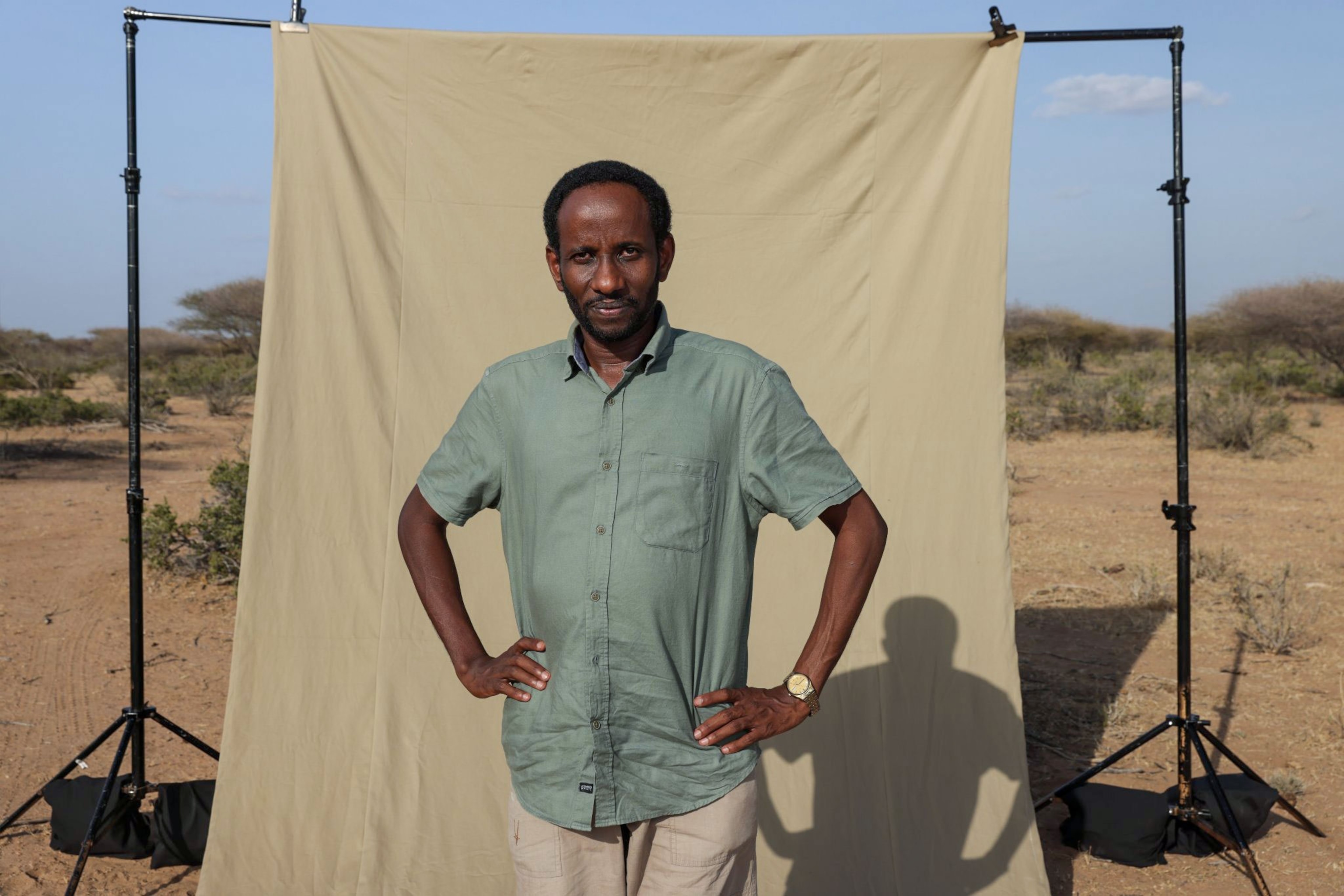
Incidents like these are also responsible for the death of vultures and scavenging birds, which clean up the remains of other animals’ kills. Today, most of these birds have been killed in secondhand poisonings. The skies are empty.
Poaching
Yussuf is in Garissa in March when he receives word that poachers have turned up in Sabuli Conservancy. It’s about an hour’s drive from Dadaab refugee camp, which hosts more than 218,000 mostly Somali refugees who have fled conflict, drought, and famine in their country. Young refugees here have few ways other than hunting and collecting firewood to support themselves and their families.
Yussuf estimates that 63 giraffes were killed by poachers across the northeast in 2021. Over a five day period in March 2022, refugees killed three giraffes in and around Sabuli, likely to sell the meat in butcher stalls in the camp and across the border in Somalia.
Some refugees also bring donkey caravans into the protected areas to forage for firewood to sell. The journey by foot takes nearly a week, and they often hunt dik-dik and other small game to eat during their journey.

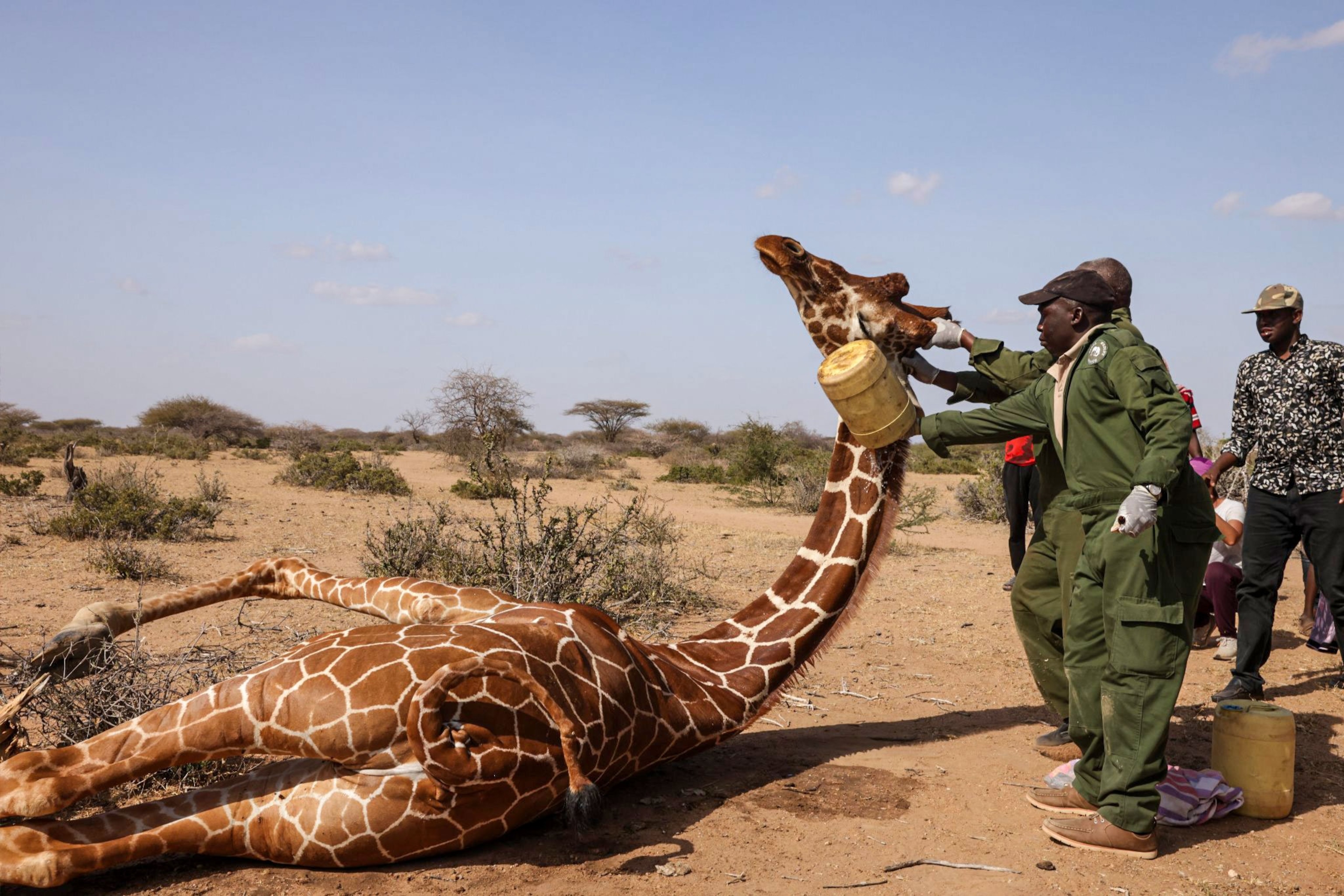
Yussuf has organized a poaching patrol with rangers from the Kenya Wildlife Service in Wajir, local police, and Sabuli’s community rangers. Armed and ready, the caravan of vehicles sets off, traveling on dusty rough roads that turn into narrow winding paths. Eventually, they come upon a group of seven young men relaxing under a tree, seeking respite from the 100-degree heat. Each one has a donkey cart piled ten feet high with firewood.
The rangers jump out of the car and round up the young men, shouting threats in their faces. They search each man and discover several sharp, serrated hunting knives and a food sack covered in blood. Just down the road they find the spindly, fragile legs of a mostly eaten dik-dik.
The rangers consider burning all the firewood to teach the young men a lesson but decide against it. The dry conditions could cause uncontrollable wildfires. Instead, they knock down the carts, spilling the contents of five days of labor onto the ground. When the rangers are gone, the refugees will pick up each log and place it back in the carts. They have rented these carts from businessmen in Dadaab and cannot risk showing up empty-handed.
Dropping dead
Ali Gedi, a 50-year-old goat herder and father of 10, remembers the days before climate change ravaged this land.
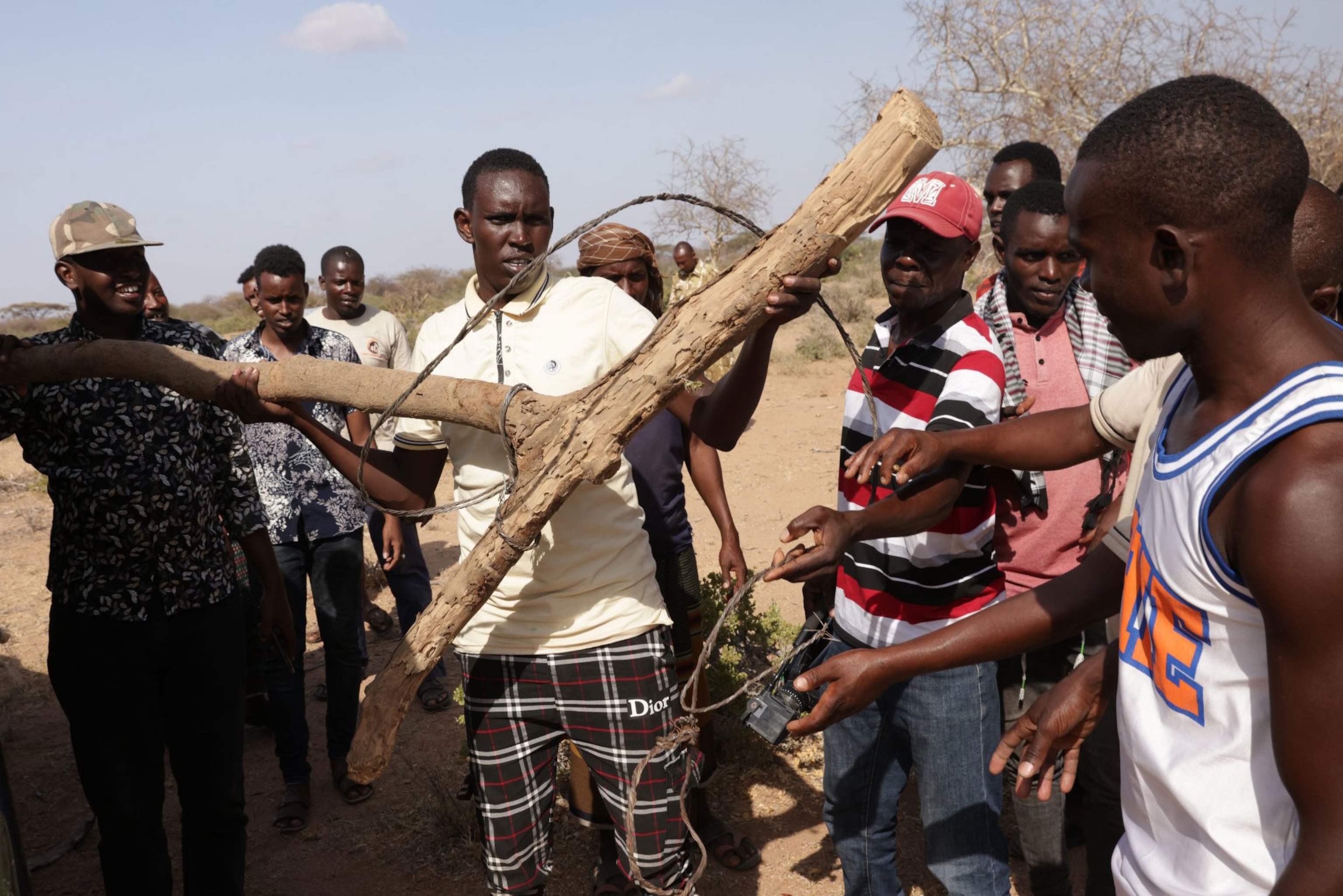
“I used to see elephants as a child,” he recalls.
But the elephants left northeast Kenya long ago, driven out by poaching and habitat destruction, and local residents have suffered from their loss. The elephants used to trample the brush with their massive flat feet, creating grasslands where goats and antelopes could graze side by side.
“We lost a lot of benefits when the elephants left,” Gedi says. “We won’t allow the same thing to happen to the giraffes.”
Gedi is from Eyrib, a town outside Wajir that depends on several large reservoirs built by the government back in the 1980s. But in the final months of 2021, most nearly dried up because of the drought. Since then, giraffes, unable to find any other water, travel to drink from the small muddy puddles still left in the center of the huge reservoirs.
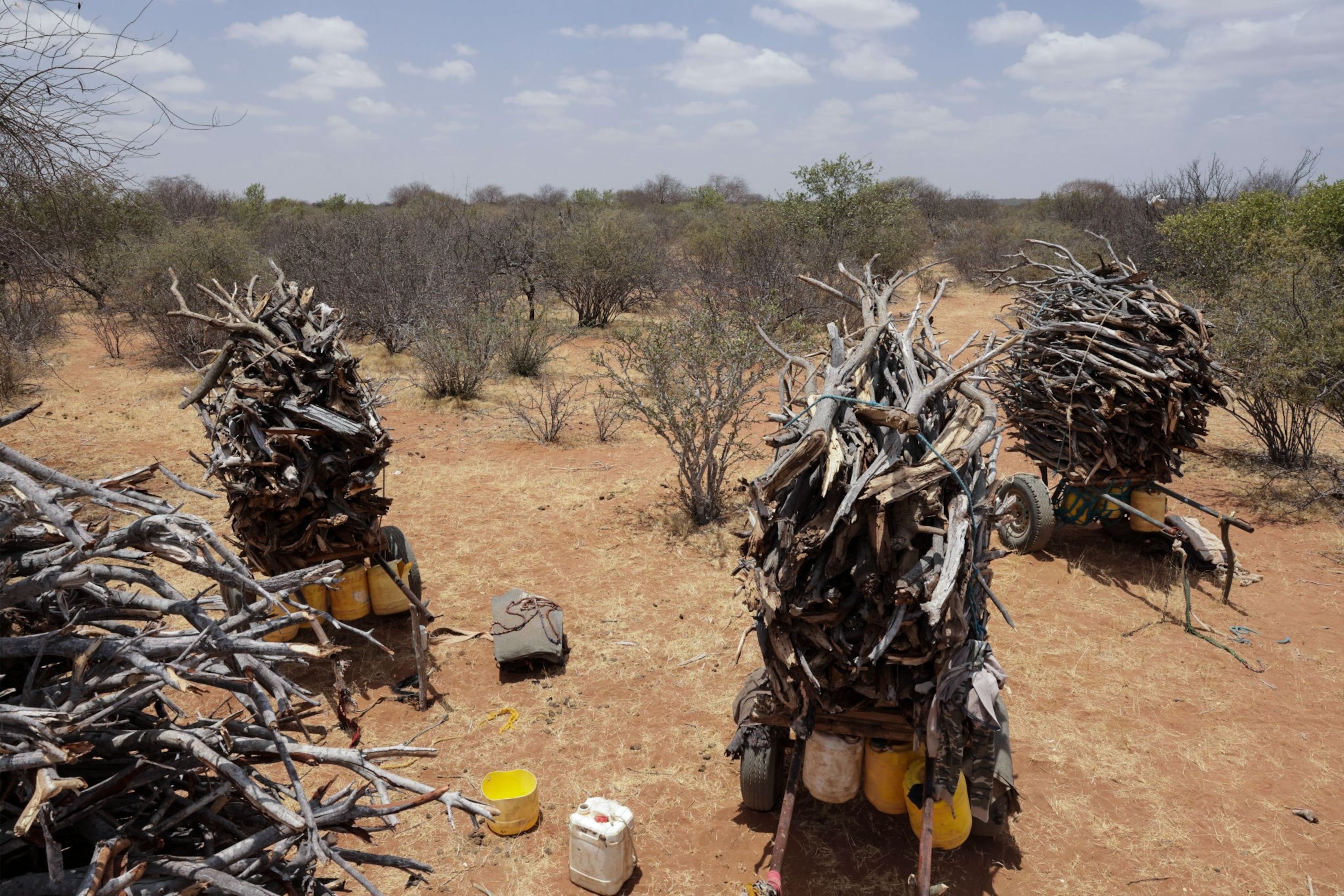
Kenya Wildlife Service rangers received the call in November of last year. Seven giraffes were stuck in the reservoir mud. Some were already dead, while others were too weak to pull themselves out. Rangers raced to the scene, but the remaining animals, frightened and in pain, died before they arrived.
Rangers hitched the dead giraffes to trucks and dragged their corpses out of the mud to prevent water contamination. They laid their bodies in a circle, a public statement about what climate change will do to the world’s wildlife unless humans take fast action.
In total, more than 215 giraffes across the region died from drought between August 2021 and January of this year, Yussuf estimates.
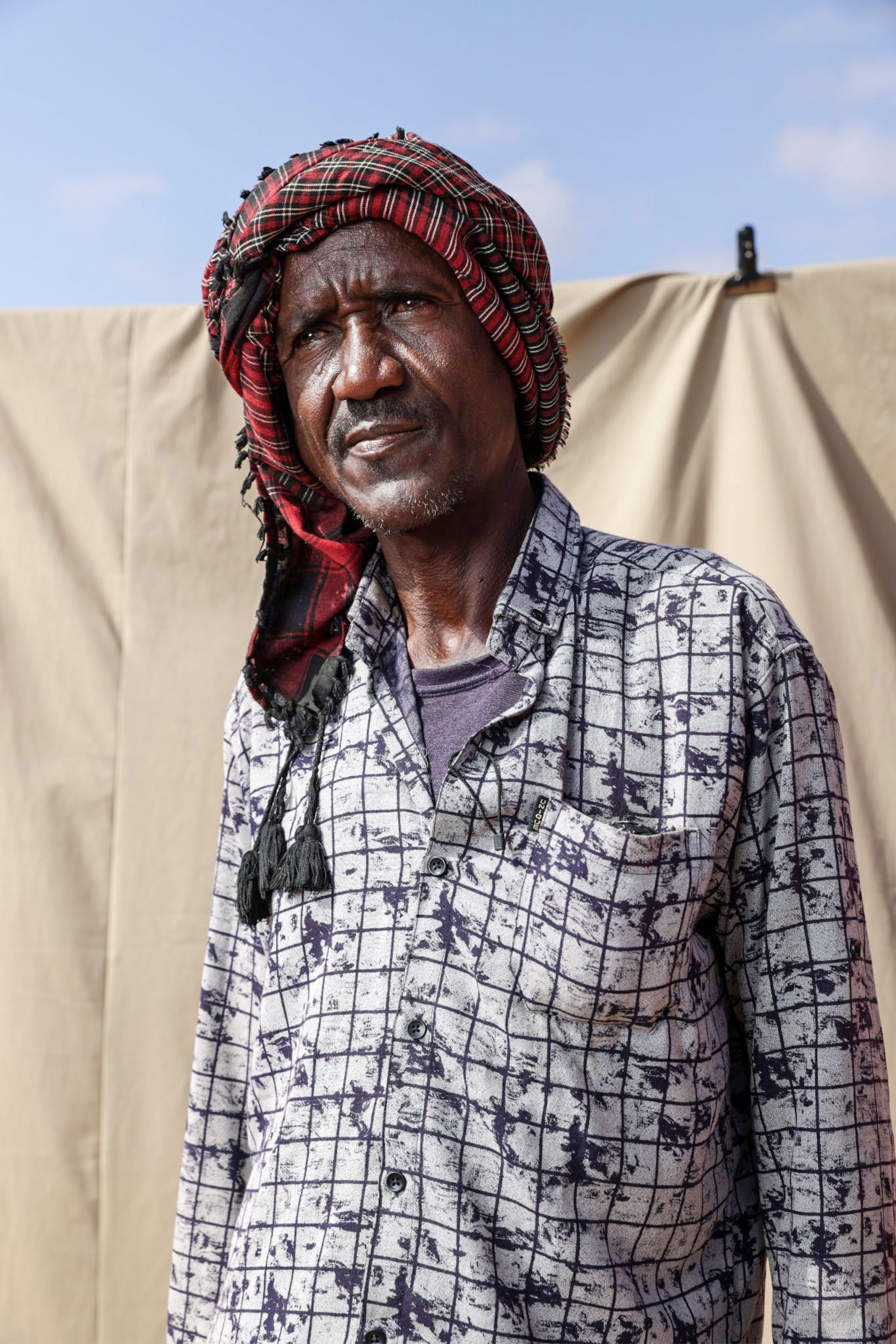
Some 30 hirola also died during that drought. Only about 500 of these shy and sensitive creatures remain in the world, so the deaths represented nearly six percent of the total population.
“Nobody knows about the plight of the hirola,” says Ali, the world’s foremost expert on the hirola. “If they’re not charismatic, they’re not bringing money to the government through tourism, so no one will care.”
There have been some successful efforts by conservationists and the government to mitigate the damage being caused by climate change. Last September, three poachers were arrested with two cars full of giraffe meat as they headed to the Somali border crossing. They received a fast-tracked trial in Wajir, and two of them were sentenced to six years in prison, three years longer than the required sentence. For Yussuf, the verdict was a welcome one as he continues to fight on behalf of the wild animals who cannot fight for themselves.
The day before he flies back to Nairobi, Yussuf meets with three men from other parts of Wajir county who want to start new conservancies. Jima Conservancy has been established as a community-based organization in the eastern part of the county, and the men are working to include it under the NECA umbrella. Yussuf sits with them for nearly two hours, talking them through each step they must take to successfully protect their land and the animals within.
“If you’re doing this for money, there’s no money,” Yussuf tells them. “We are doing this for future generations.”
